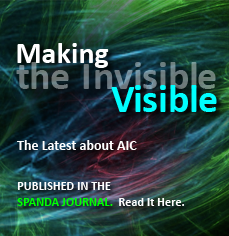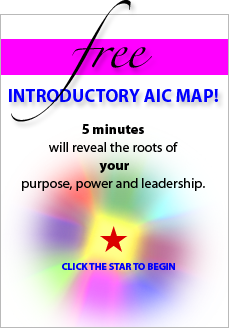Book Summary
Introduction
As a Management Trainee for British Overseas Airways Corporation (BOAC), some forty years ago, my life was transformed by an assignment given at the end of that program. We had to write a paper on the effects of organization and management theory on practice. I am finally finishing that assignment with this book. The book, far from showing a one way relationship between theory and practice, shows how human intuition and experience can combine, transform and even transcend both theory and practice. It traces the emergence of a new philosophy, model and process of organization from the stimulus provided by that first paper.
The journey takes us from applications in the private sector; from individual management experience in improving the performance of airlines, to consulting at the organizational level with applications in the pharmaceutical and chemical industries to the design of multi-national corporations. It shifts to the public sector with the creation of a new paradigm for the design of World Bank projects which then moves to the design of whole sectors of economies, whole countries, and to the design of the global development system itself. The book traces the evolution of a new philosophy, theory and model of organization called AIC for appreciation, influence and control. The terms describe the three fundamental power relationships that form the base of the new model. The journey then returns to its origin people working in organizations trying to improve their own lives while contributing to improved organization that will leave the world a better place because of their joint efforts.
Part I: The Insights from Experience
Each chapter of Part I describes a phase of the three cycles of time that frame the AIC theory developed in the book. Each chapter interweaves the struggle of practitioners, typified by the author, acting against the backdrop of available theories and philosophies from the field of organization and beyond trying to extract or create middle ground principles and models that better address the uniqueness of their situation, experience and style.
Chapters 1-3 acquaint us with descriptions of the both personal experience and the historical evolutions that lead to the discoveries explored in this book. We explore control-centered, influence centered and appreciative centered spaces in the context of classical organization theory, open-systems and whole systems thinking. We become acquainted with the concepts and practices associated with each space through stories of practice and its limitations. We review the literature and its evolution from control-centered thinking, through influence and then to the emerging appreciative-centered thinking.
The story in the three chapters is one of addition, not replacement; the gifts of the classical period remain. The gifts of the opens-system space are added to those of the classical period. The new space of whole systems is added to that of both the classical and open systems spaces. At the end we will see that all three spaces were always there and some of writers especially Mary Parker Follet, a writer in the classical period saw and dealt with all three right from the beginning.
Chapter 4 unites the perspectives of the first three chapters though the stories of application to the design of projects and programs in the field of International Development.
Part II: The Philosophy, Theory Process and Model
Part II is the influence part of the Book; it is the middle ground that joins together reflections from science, philosophy and religion with learning form practice to produce an organization process that builds in the wisdom derived from all sources.
Chapters 5-7 paint a broad picture of the theoretical, philosophical and spiritual evolution that lies behind the development of the AIC concepts and their current practice. It expresses the driver as a philosophy drawn form the intuitive insight that purpose is the source of power. This insight could generate many different models but in this book we develop, a model of power relationships. Similarly there are dozens if not hundreds of different approaches that can be used to implement the philosophy and model. Chapter 8 describes the generic process that is drawn from this combination of reflection and practice. It describes the process in a way that allows it to be adapted to any organizational issue the reader might face.
Though every instance or use of the model has to be reduced to some form of technology and technique in order to implement, we advocate strongly against reducing AIC to a specific technology or set of techniques to be used in every instance. To do so negates the foundational philosophy that every person is unique, and every situation is unique. Every person has their unique expression of the three powers and every situation has its own latency for manifestation of the three powers. The joy and sorrows of living, the joy and sorrows of work are to be found in this engagement of the actor and the situation. It is here, the center of the organizing process, that the full expression of the power of purpose to create and re-create is found. It cannot and should not be reduced to formulae. The joy of creation comes when the whole is engaged in fully appreciating a situation, when all the stakeholders engage fully with both the positive and negative forces to discover the best pathways, and then fully informed actors take responsibility for the decisions that they make knowing that they are fully "in-formed" with all the many levels of meaning of that word.
PART III: Implications for Ourselves our Organizations and the World
Part III is the future, or appreciative - centered part of the book. It takes our understanding of the philosophy, the model and experience with the process to draw out implications that might stimulate the reader to research, extend, deepen and apply both the ideas and the practice.
- What would happen if we obeyed the Humpty Dumpty law - the appreciative principle that you never separate the parts, ourselves and others, from the whole?
- What is the potential if at every level of purpose we added the appreciative level?
- What would happen if we treated the appreciative influence and control fields equally?
- What are the realities we would have to face in order to achieve that potential?
To explore these questions we use the logic of the philosophy, model and process developed in Pat II.
This multi-dimensioned story is really three books in one. It is my story as a practitioner, an amateur in the truest sense of that term, one who loves his work and has been transformed by it. It is also a story of my profession searching to understand why organizations do not seem to achieve the potential that reading of the early pioneers and my first actual experience of organization led me to expect. In this sense it is also a story of an emerging field of "Organizational Sciences" that is broadening the historically narrow perspective of "Organization and Management". Organization and Management is based on a view of organizations as formal hierarchically controlled entities as studied in Business Schools while Organizational Sciences seeks to include what we know about the organization of life into our theories and practices.. Finally it is a story of the human spirit that has the power to transcend current difficulties, frameworks, models and theories to see ourselves as an essential, meaningful part of the whole, the universe of life.
Each part and each chapter within each part weaves together these three perspectives. I have tried to make each Chapter stand alone as much as possible and use cross reference to other Chapters where further explanation of ideas or practical applications might be found.
Transforming
Ourselves,
Our Organizations,
and Our World more..


